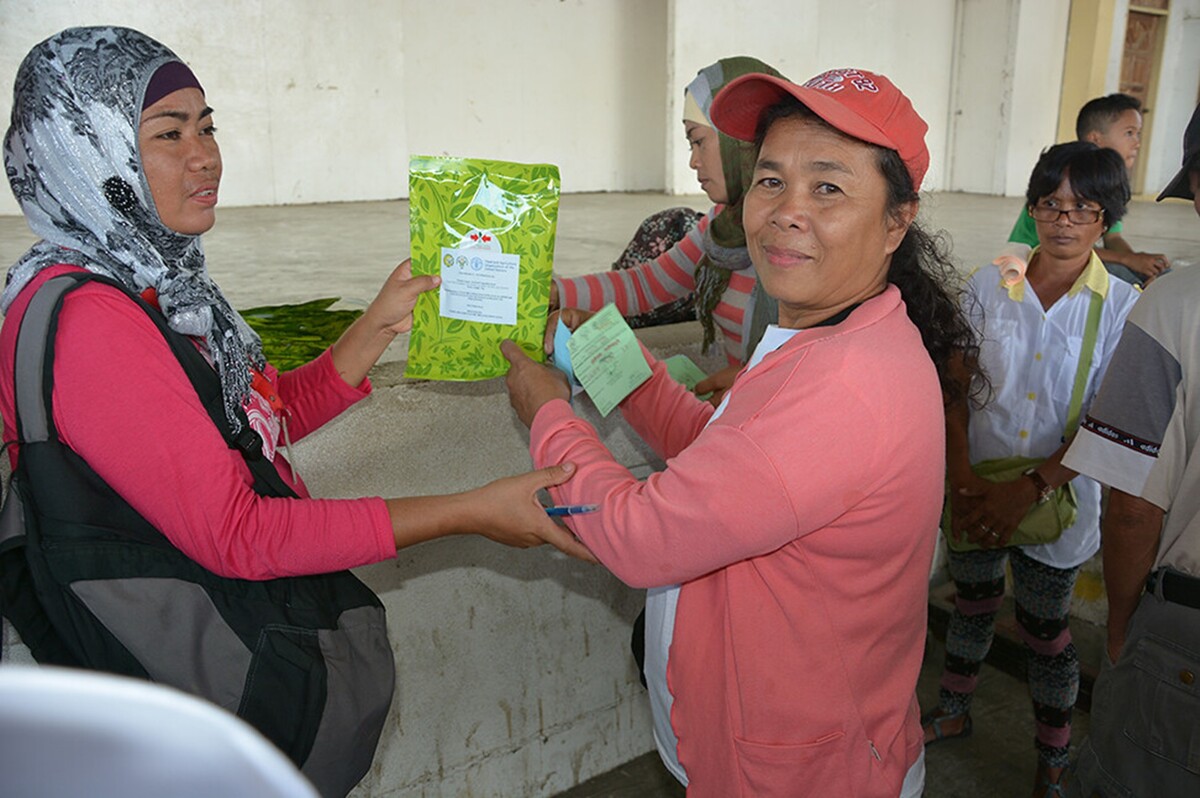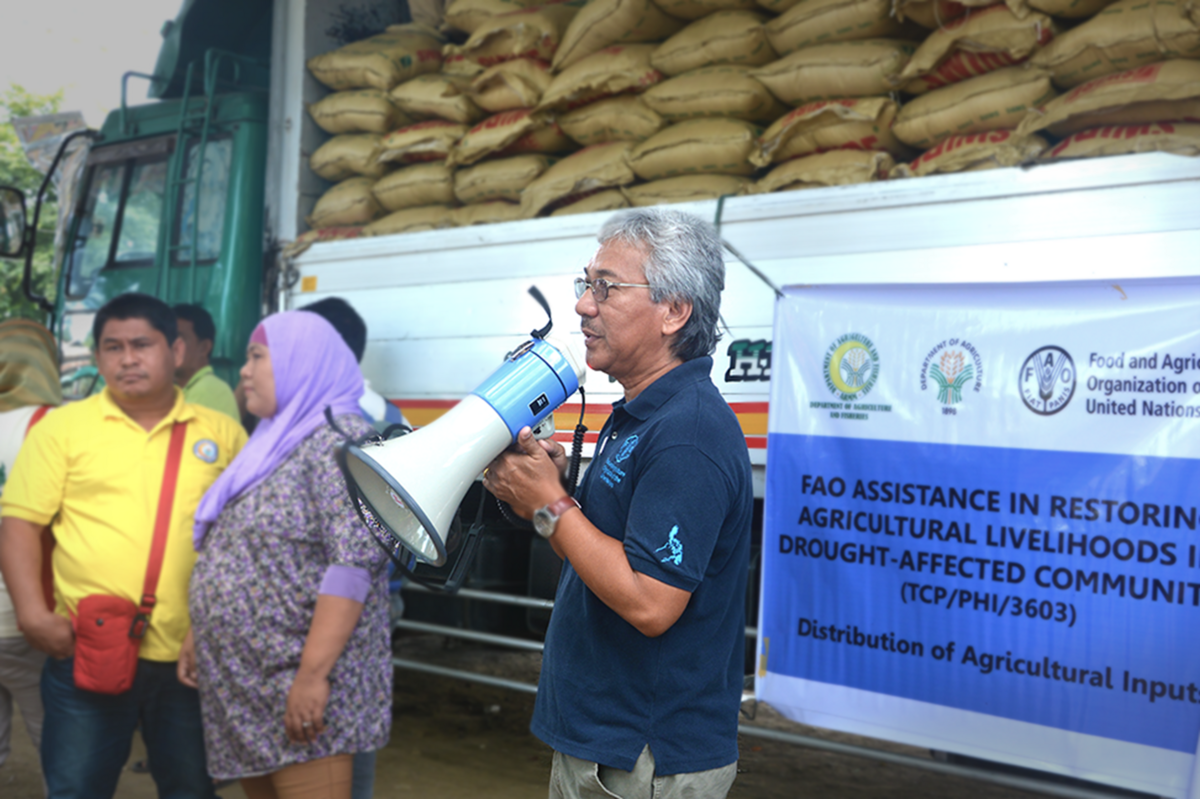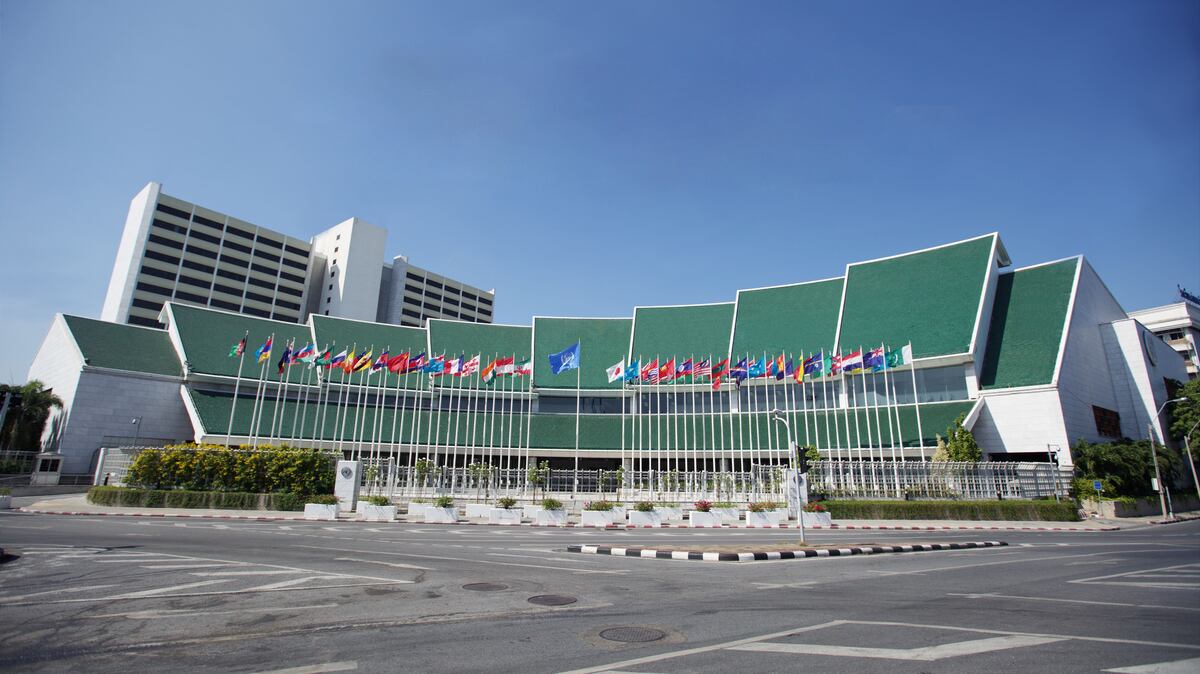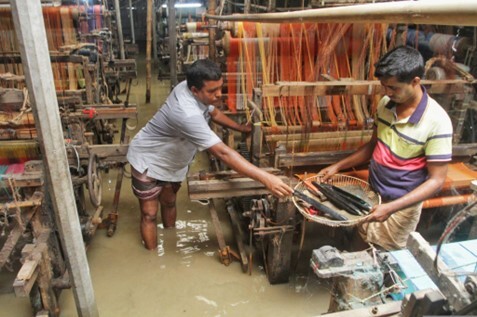
©FAO
Issue
Recurring droughts in Mindanao significantly threaten food security, water availability, and local communities’ livelihoods. As crops fail to yield, income cannot be generated and food is harder to obtain. Regional conflict further threatens safety and security, especially as seen in the plight of smallholder farmers.
The region faces the challenge of predicting potential climate-related disasters and implementing timely, practical measures to mitigate their impact on vulnerable communities and agricultural productivity, against a backdrop of conflict between the government and armed groups.
Solution
The Anticipatory Action system implements proactive activities, such as providing drought-resistant seeds, enhancing water infrastructure, and offering alternative income generation, to strengthen the resilience of communities against climate-induced droughts. This approach focuses on preventing the escalation of risks and minimizing the need for emergency responses, as demonstrated in 2018/’19 interventions.
Overview
On the southern island of Mindanao in the Philippines, the UN FAO’s Anticipatory Action (EWEA) system addresses drought-induced natural and humanitarian crises before they get out of hand. This proactive approach aims to mitigate drought’s adverse effects on agriculture and livelihoods. In the 2018/’19 El Niño drought, two smallholder farmer-centered projects were attempted in Mindanao with this approach. They yielded valuable lessons in planning, adapting, and building capacity.
Details
El Niño-induced drought is part of a complex nexus of climate, conflict, and gender on the southern island of Mindanao in the Philippines. Environmental stressors worsen social vulnerabilities, particularly impacting women, children, and smallholder farmers. Conflict between the military and armed groups is an ongoing problem, and drought conditions further strain resources. Disaster risk reduction and management (DRRM) strategies are essential, and they’re even more effective when paired with anticipatory measures. The Anticipatory Action system by the Food and Agriculture Organization of the United Nations (FAO) has given cause for hope in this area.
The FAO Anticipatory Action approach works closely with government counterparts in Mindanao comprehensively integrates accurate weather forecasting, community engagement, and sustainable agricultural practices to enhance resilience. Its preemptive actions – such as cash advances and agricultural input – help ensure water and food security during droughts. Anticipatory Action involves local communities, particularly women, in decision-making and capacity-building, mitigating immediate risks and strengthening long-term resilience. It builds on existing DRRM strategies, offering information and opportunities for local people.

©FAO
El Niño, drought, and preparation
During the 2015/’16 El Niño, Filipino farmers lost 1.5 million tons of crops, and more than 400,000 farmers needed help to recover. Mindanao suffered US$325 million in damages and losses. Climate change is increasing and intensifying such disasters.
FAO saw this pattern and, targeting the staple crop, rice, set up an Anticipatory Action system to prepare for the next drought. In November 2018, the data-informed system warning was triggered, and preparation for the next El Niño drought began. This was 4 1/2 months earlier than usual responses, allowing for a proactive rather than reactive response.
Cotabato and Maguindanao Provinces, two of the Philippines’ poorest and most vulnerable areas, looked as if they would be strongly affected. Accordingly, the FAO activated its Anticipatory Action Fund, releasing US$400,000, owing especially to support from Belgium. Interventions went into action.
Intervention in Datu Saudi Ampatuan, Maguindanao Province
In Datu Saudi Ampatuan, Maguindanao Province, FAO’s Anticipatory Action intervention addressed environmental and socio-political challenges. The main aim was to shield vulnerable rice farmers from the expected drought while offering new ways to earn income and offset their losses.
The approach adapted to different planting times and the potential for conflict. FAO established duck farms and community gardens in safe zones, allowing families to gather eggs and grow vegetables, boosting food supply, income, and community unity. Those able to go home during the day harvested and cooked, maintaining normalcy in tough times.
The intervention also responded to increasing tensions in the province, which can limit access to rice fields, highlighting the need for alternative livelihoods. For each dollar FAO invested, families gained benefits worth US$4.40. Distribution of ducks and assistance with vegetable gardens and ducks supported nutrition and gave income-earning opportunities. Some men were also offered cash compensation for working to clean irrigation canals, which had a knock-on positive effect for other farmers. The Anticipatory Action strategy in Datu Saudi Ampatuan helped immediately against drought and strengthened long-term community resilience and food security. Diversifying food and income sources were valuable anticipatory approaches.

©FAO
Intervention in Pigcawayan, Cotabato Province
Rice farming is the main livelihood in Pigcawayan, Cotabato Province, and rice is especially vulnerable to El Niño drought. FAO’s Anticipatory Action same an urgent need to safeguard this vital agricultural sector, as it is a cornerstone of the region’s food security and economic stability. The multifaceted intervention focused on boosting the resilience of rice farming against severe drought.
Distribution of drought-resistant rice seeds and strengthening the water supply were key components in the approach here. Stress-tolerant rice seed varieties can maintain productivity even under reduced water availability. This proactive measure aimed to sustain rice production during the 2019 drought and equip farmers to deal with future dry spells. The intervention also enhanced the community’s water supply systems to meet the immediate irrigation needs during the drought and strengthen the water infrastructure over the longer term.
Despite seed distribution and water system improvements, the drought’s impact on rice yields was evident, underscoring the constant challenge posed by climate change and variability. The results showed how agricultural systems can be vulnerable to extreme weather conditions and laid foundational work for future resilience.
Gender dynamics and participation
The Anticipatory Action project in Mindanao recognized and actively addresses the region’s gender dynamics by fostering inclusive participation and addressing women’s specific needs of women. The project is specifically designed to empower women, who are often the primary managers of household resources and are frontline agricultural workers. This makes women disproportionately affected by climate-induced challenges.
Women’s involvement in planning and executing project activities ensures their perspectives and needs are considered and bolsters their positions within their communities. Women can leverage their roles to optimize the benefits of drought-resistant seeds, water infrastructure improvements, and capacity-building efforts.
The Anticipatory Action project also emphasizes capacity building among local stakeholders, ensuring that the system’s benefits extend beyond immediate drought mitigation. By empowering communities with knowledge and resources, it lays the foundation for long-term sustainable development while enhancing food security and promoting robust agricultural practices. The approach shows Anticipatory Action’s effectiveness in building resilience against climate-induced challenges, setting a precedent for similar initiatives in vulnerable regions worldwide.
Continued scale up of Anticipatory Action in the Philippines
As the prospect of drought loomed again in early 2024, the Department of Social Welfare and Development (DSWD) and the FAO were jointly implementing the project, “Building on Social Protection for Anticipatory Action and Response in Emergencies and Disasters (B-SPARED).” The aim was to mitigate the potential severe impact of agricultural drought on poor and vulnerable smallholder farmers and cushion income loss and food insecurity – and carry the learnings from the 2018/19 experience in Mindnao. This also complemented the established government cash-for-work program to mitigate the El Niño induced drought impact. With weather and climate data indicating worsening conditions in Isabela province, proactive measures involved implementing cash-based interventions to bolster water management efforts and support the needs of farming families experiencing reduced yields. Leveraging socioeconomic targeting methodologies utilising the government's poverty registry and farmer registry, vulnerable households were specifically identified and targeted for assistance.
Project information
Location: Mindanao, Philippines
Funding: FAO’s Special Fund for Emergency and Rehabilitation Activities (SFERA)
Duration: Ongoing, with a focus on long-term sustainability and community resilience and in partnership with Directorate-General for European Civil Protection and Humanitarian Aid Operations under the Pilot Programmatic Partnership
ACKNOWLEDGEMENTS
We extend our appreciation to the Food and Agriculture Organization of the United Nations (FAO) for their generous provision of this case study to the database.




